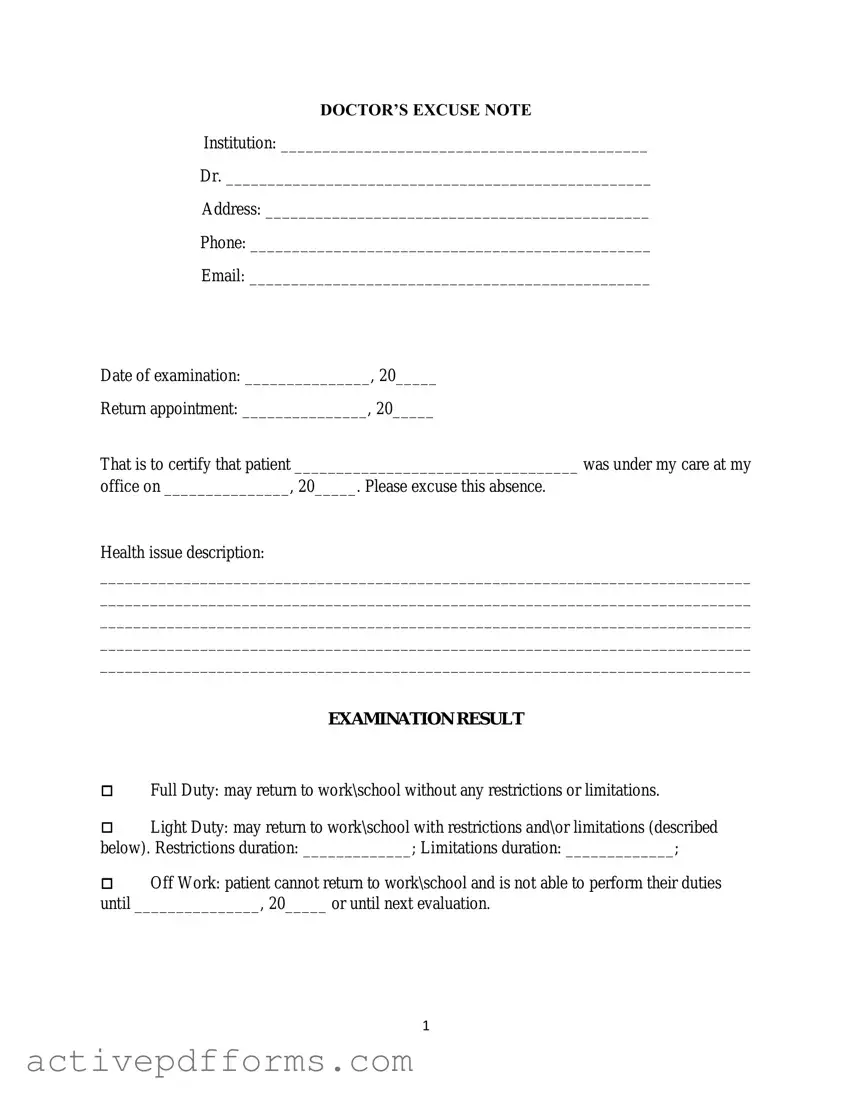Free Doctors Excuse Note PDF Template
A Doctor's Excuse Note form is a document provided by healthcare professionals to verify that a person was ill or had to attend a medical consultation and thus, could not participate in work, school, or other activities. This form serves as evidence of a legitimate reason for absence, supporting the individuals to justify their lack of attendance or participation during the specified period. The document typically contains information regarding the date of the appointment, the medical reason for the visit, and, if applicable, the advised period of rest or absence from activities.
Edit Doctors Excuse Note Now
